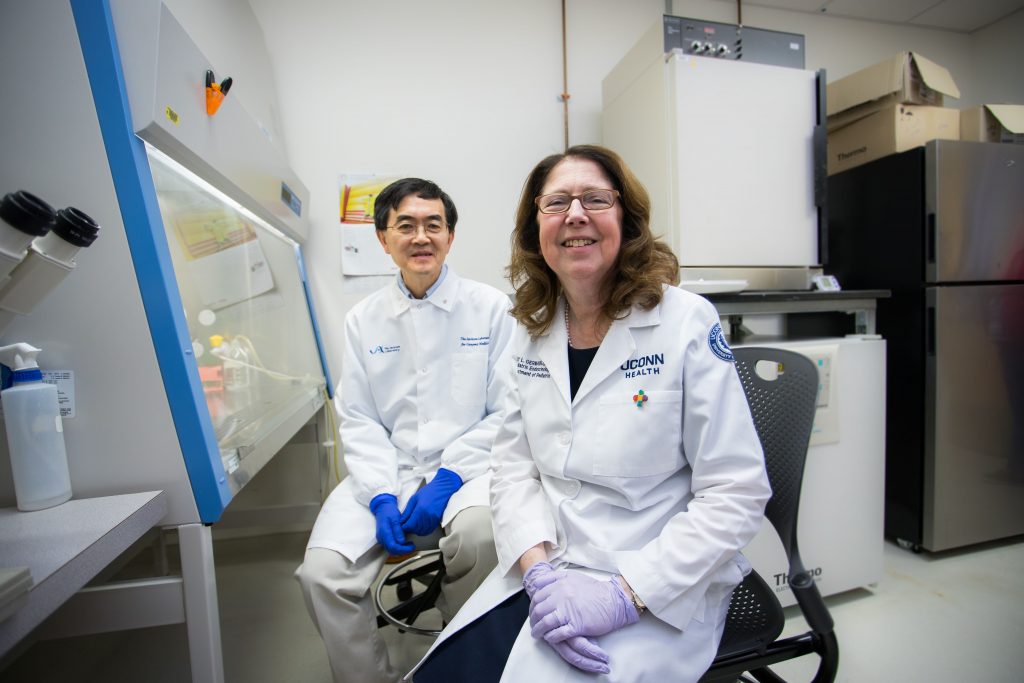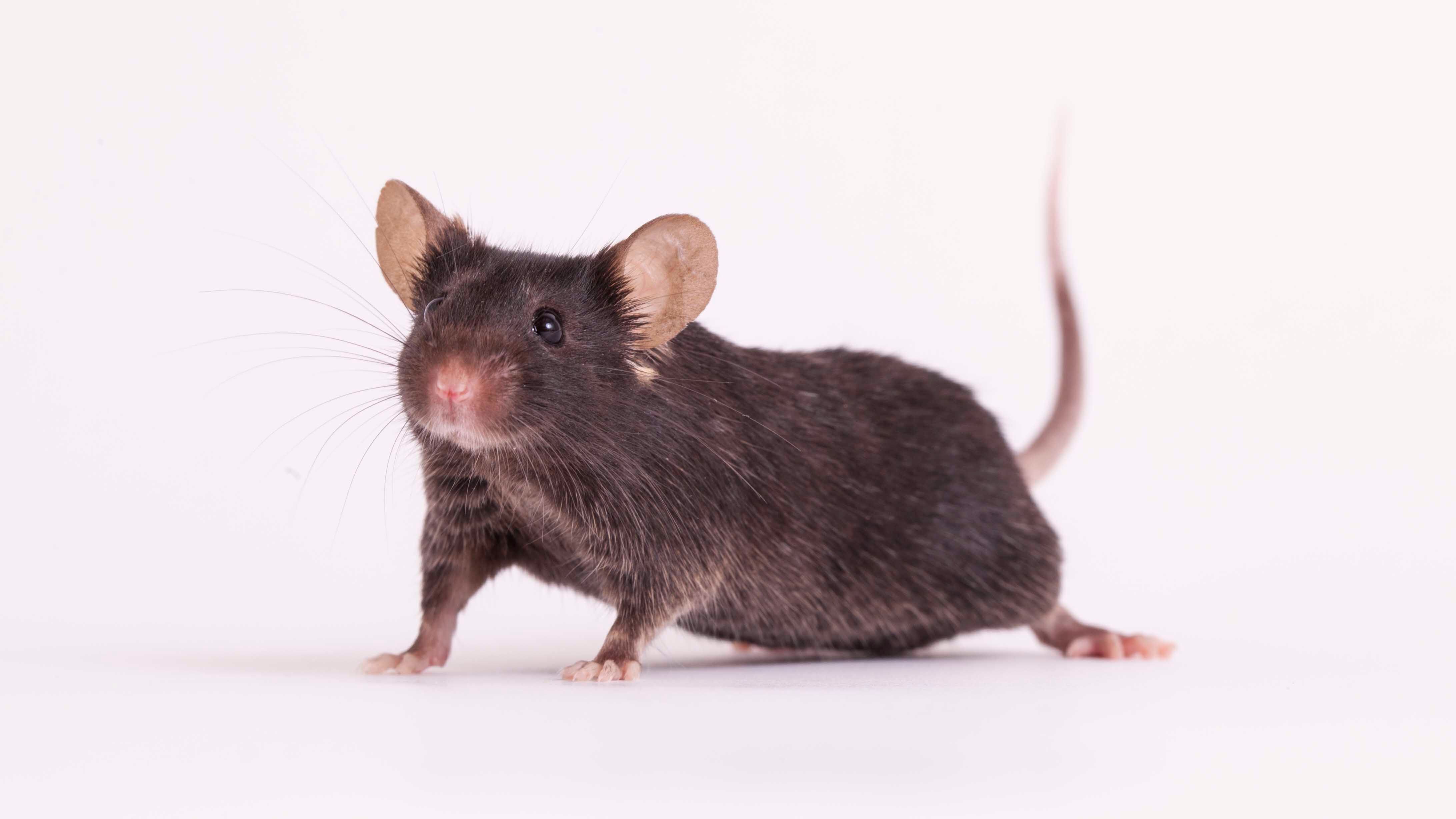On Thursday, Dec. 5, researchers from The Jackson Laboratory for Genomic Medicine (JAX-GM), UConn Health, and Connecticut Children’s sent genetically-engineered “Mighty Mice” to the International Space Station to learn about the effect of microgravity on muscle and bone loss.
The mice were launched at 12:29 p.m. on SpaceX’s Dragon spacecraft on a Falcon 9 rocket from Cape Canaveral Air Force Station in Florida. These Mighty Mice are special mice raised by JAX’s custom breeding team in Bar Harbor, Maine, that are genetically engineered to lack myostatin and therefore display approximately twice the average muscle mass. The mice will spend approximately the next 30 days in space to help researcher Se-Jin Lee, M.D., Ph.D., professor at JAX-GM and Presidential Distinguished Professor at UConn School of Medicine, understand the impact of microgravity on muscle and bone degeneration.
Lee’s research study is a collaboration with co-investigator – and spouse – Emily Germain-Lee, M.D., professor of pediatrics at UConn School of Medicine and Division Head of Pediatric Endocrinology at Connecticut Children’s.
The researchers will utilize data from this mission to further explore the potential that myostatin-inhibitors hold for treating muscle and bone loss. This could benefit everyone from astronauts – helping prevent skeletal muscle and bone loss during spaceflight and enhance recovery following their return to Earth – to people who are suffering from muscle atrophy and bone degeneration-related conditions.
“This is a project that I’ve been trying to get off the ground, so to speak, for many, many years. To see it all come together now is nothing short of amazing,” said Lee. “The knowledge we gain about microgravity’s effects on muscles and bones will help us to enhance the health of astronauts – both in space and on Earth, and also better understand the promise that myostatin inhibitors hold for the elderly, people who are bedridden, and for people experiencing muscle-wasting related to diseases like AIDS, ALS, cancer, and so many others.”
Lee discovered the myostatin gene in 1997, and was the first to show myostatin’s role in regulating muscle growth. His space-based project, funded by a competitive Center for the Advancement of Science in Space (CASIS) grant (manager of the International Space Station U.S. National Laboratory), will explore a new angle on the role of myostatin.
“We are so excited to help advance our research findings both to help protect our astronauts traveling to space and to aid people here on Earth with serious health conditions that impact their muscle and bone strength and use, and most importantly their daily quality of life,” said Germain-Lee.

Germain-Lee also manages the first-of-its-kind Albright Center at Connecticut Children’s, which cares for more patients suffering from this rare inherited bone and endocrine disorder than any other center in the world. At Connecticut Children’s, Dr. Germain-Lee provides clinical services to these patients while her robust laboratory research and clinical trials are underway at UConn School of Medicine.
In addition to the remarkable science, the “Sending JAX Mighty Mice to Space” project will incorporate an invaluable STEM learning experience within the Hartford, Connecticut Public School System. Lee and Germain-Lee are working with JAX’s Genomic Education team to develop a curriculum for two Hartford public high schools. The students will have the opportunity to analyze data collected at the ISS and conduct their own independent projects about muscular and bone degeneration.
“As an independent, nonprofit biomedical research organization, we are focused on conducting the most impactful science and empowering the global biomedical community – including the scientists of tomorrow,” said Charles Lee, Ph.D., FACMG, scientific director and professor, The Jackson Laboratory for Genomic Medicine. “And that’s part of what makes this program so special: the opportunity to collaborate with UConn Health and Connecticut Children’s, as well as inspire the next generation of scientific leaders right here in our local community.”
Astronaut Jessica Meir, a physiologist who is serving as a flight engineer on the current space station mission, hails from Caribou, Maine and was trained to work directly with the JAX Mighty Mice.
“This is true team science and this exciting research advancement among our strong partnering institutions of UConn School of Medicine, JAX and Connecticut Children’s is literally out of this world,” said Dr. Bruce T. Liang, dean of UConn School of Medicine. “I am so proud of Dr. Se-Jin Lee and Dr. Emily Germain-Lee. Our talented scientists are continuing to push the boundaries of science and medicine to the highest heights available – space!”
“This incredible project is a true testament to the power of collaboration and science,” said James Shmerling, DHA, FACHE, President & CEO of Connecticut Children’s. “I have no doubt this is just the beginning of many more extraordinary research projects that will continue to enhance Connecticut’s reputation as a hub for innovation and scientific advancements. Connecticut Children’s is proud to play an important role.”
To learn more about this out-of-this-world research project, visit www.jax.org/miceinspace.
Video of the full launch, courtesy of NASA:



